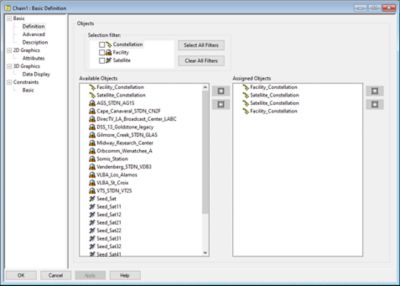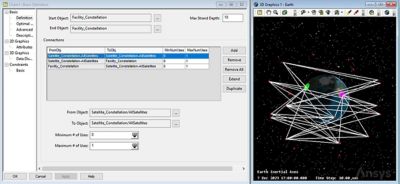-
-
Kostenlose Software für Studierende
Ansys unterstützt die nächste Generation von Ingenieur*innen
Studenten erhalten kostenlosen Zugang zu erstklassiger Simulationssoftware.
-
Verbinden Sie sich jetzt mit Ansys!
Gestalten Sie Ihre Zukunft
Stellen Sie eine Verbindung mit Ansys her, um zu erfahren, wie Simulation Ihren nächsten Durchbruch vorantreiben kann.
Länder und Regionen
Kostenlose Demoversionen
Produkte & Dienstleistungen
Lernportal
Über das Unternehmen
Back
Produkte & Dienstleistungen
Back
Lernportal
Ansys unterstützt die nächste Generation von Ingenieur*innen
Studenten erhalten kostenlosen Zugang zu erstklassiger Simulationssoftware.
Back
Über das Unternehmen
Gestalten Sie Ihre Zukunft
Stellen Sie eine Verbindung mit Ansys her, um zu erfahren, wie Simulation Ihren nächsten Durchbruch vorantreiben kann.
Kostenlose Demoversionen
ANSYS BLOG
February 9, 2024
What's New with Chains in STK?
If you haven’t heard already, the chain object workflow in Ansys Systems Tool Kit (STK) is getting a major overhaul. After listening to your feedback, we updated the workflow to better suit your needs. We have also added a new feature that will help you solve problems that could previously only be solved through scripting.
Chain objects enable you to extend the access analysis capabilities of STK, and access enables you to determine the times in which one object can see another object. But what if two objects cannot directly see each other, but each object can see a third object? This is where the chains analysis capability can be used. By defining a start object, end object, and a set of object connection pairs, STK can compute the times in which one object can see another through connections to one or more objects.
One of the biggest changes in this release of STK is the ability to do multiple hop (connection) analyses using constellations and satellite collections in the chain object workflow. Before this release, the chain object workflow required that each object in the chain be included in every strand (path) for that strand to be valid. If you wanted to model satellites passing information to each other in a constellation, you would need to add the constellation object multiple times. Additionally, changing the number of times the constellation could talk to itself required deleting or adding instances of that constellation, or even creating new chain objects.

Figure 1. Previous version of the chain object workflow.
Now, with the new multihop capability, you can set the minimum and maximum number of uses for a particular connection in a chain. This greatly alters the effectiveness of the chain object workflow, simplifying the process and negating the need to constantly modify the chain definition or hold onto multiple versions. For example, two facilities on opposite sides of the world could communicate using a constellation of satellites and one hop in the constellation, as shown in Figure 2. You can now quickly modify how many hops are allowed through the constellation by changing a single parameter.
By combining this new multihop capability with routing rules for constellations and satellite collection, you can now easily model larger and more complicated scenarios. Routing files let you specify “rules” for objects within a constellation or collection, such as which objects in a constellation can speak to each other. This prevents STK from computing every possible combination of paths through a constellation, discarding undesirable connections and decreasing computation time.

Figure 2. Facilities can communicate through constellations.
The next change is a completely new feature altogether. Past releases would have required the use of scripts and coding languages to determine optimal strands through a chain. The optimal strand controls are in response to the need to easily identify the best path out of all the possibilities at any given point in time. This release of STK provides the option to calculate an optimal path through a chain according to a chosen metric. The optimal strand can be measured in regard to distance between objects in a strand, the processing delay of a strand, or through access to STK’s Analysis Workbench calculation scalar (AWB) function. This new characteristic of the chain object workflow massively increases its usefulness in analysis.

Figure 3. Minimum distance highlighted through constellation.
The capability to choose an AWB calculation scalar related to access opens the use of optimal strand calculations even further. You can use custom calculation scalars to modify your scenario analysis to fit your personal needs. The new features of the chain object workflow can also compute in parallel, enabling you to complete deeper computations quicker and more efficiently.
Chains are now better equipped to solve your unique problems by computing optimal strands based on a metric that you decide. STK’s personalization of chains is a massive step forward in enabling you to solve bigger and more complex problems.
To learn more, check out the Ansys 2024 R1 highlights.